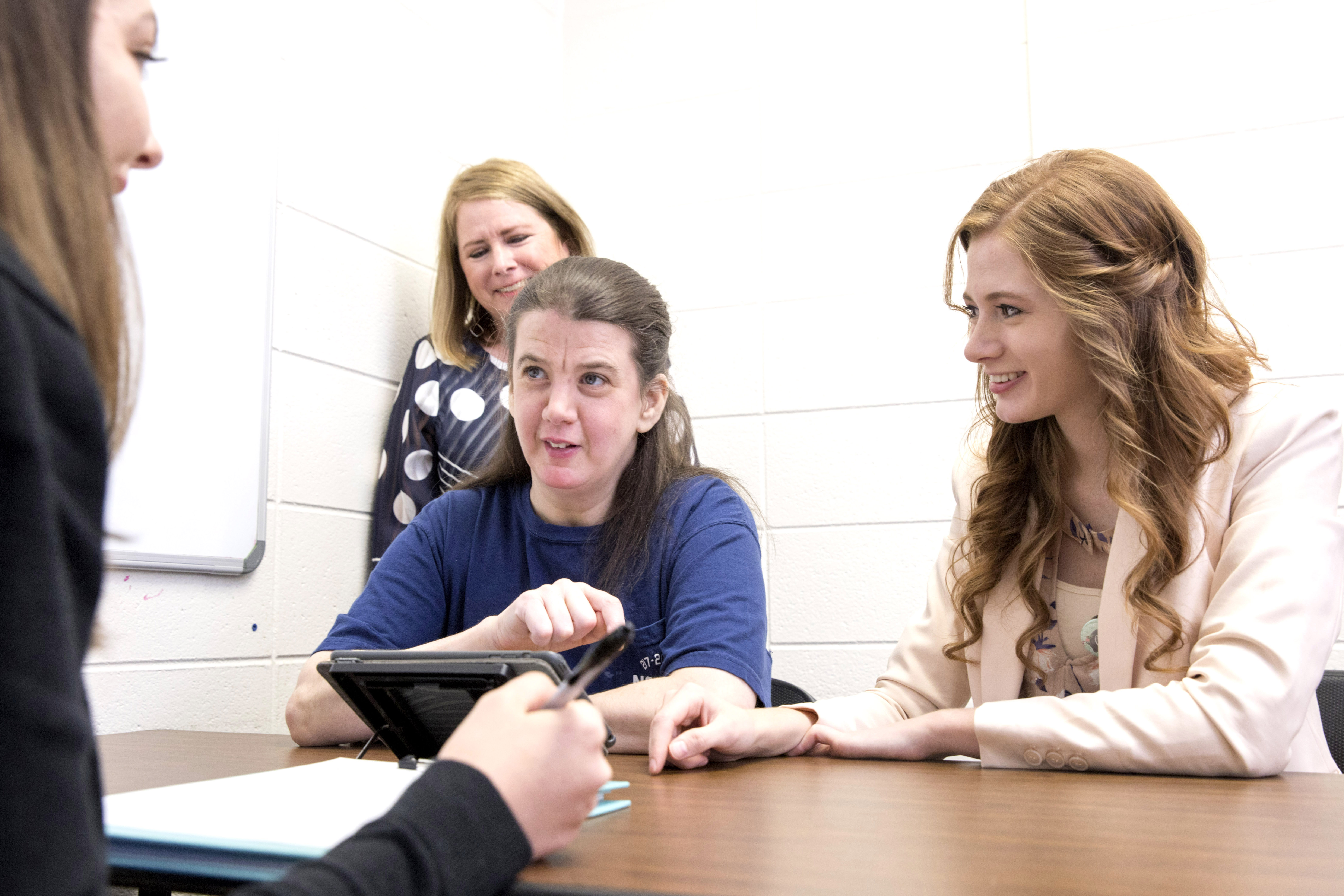Venture to the fifth floor of Aderhold Hall, and you’ll find one of the University of Georgia’s best-kept secrets, the Speech and Hearing Clinic.
“We still see people who tell us that they had no idea we are up here,” said Carol Ann Raymond, the clinic’s director and a practicing speech-language pathologist.
Housed in the communication sciences and special education department of the College of Education, the clinic is the training site for students receiving their master’s degree in communication sciences and disorders. Under the supervision of licensed clinical faculty, the students take their theoretical knowledge and apply it to actual patients.
The clinic first opened its doors in 1953 to satisfy the requirements for training students as laid out by the then-American Speech Language Hearing Association (the organization is now the Council on Academic Accreditation on Audiology and Speech Pathology). Since then, the clinic has been educating UGA students and providing assistance to residents of Georgia and beyond.
“Our mission is to provide a clinical education for our students and to be a service to our community,” said Raymond, who estimates that about 1,000 patients come through the clinic’s doors each year.
While many of the clinic’s patients are affiliated with the university, the majority of them have no connection to UGA. Some travel from as far as Savannah or even Indiana and Barbados. Patients come for a litany of reasons, ranging from help with their hearing aids to speech-language therapy. This gives students a variety of cases from which to learn.
“I personally believe that the best way to learn is through experience,” said Carly McDaniel, a first-year graduate student. “You can sit in a classroom all day long, but you only really learn things once you see and do them with an actual client.”
Students in the two-year master’s program spend three semesters seeing clients in the clinic and in part-time off campus placements before moving on to internships their second year. Their experiences in the clinic will prepare them as they move on to these internships and then into their careers.
“I really could not think of a better career path or a better way to help people,” McDaniel said.
Each week, McDaniel sees seven clients ranging from ages 2 to 19 who have speech and language disorders. In addition to her 12 credit hours of class, she spends about 20 hours a week doing prep work and actually working with her clients during sessions. She is one of 26 students in the current cohort working in the clinic.
“We do therapy and treatment on those areas that our clients need help,” she said. “Once we’ve established their needs, then we come up with a plan of what they are going to work on this semester.”
While the students do a significant amount of work with the clinic’s patients, they are carefully overseen by one of seven full-time and one part-time clinical faculty members.
“We have a very high standard of excellence,” said Raymond. “Our students are closely supervised, and we ensure they are providing our patients with the best possible care.”
McDaniel sees this component of the clinic as another perk of her education.
“On top of getting the client experience, you are also getting the professional expertise from people who have been in the field for such a long time,” she said.
This is important, because while the clinic needs to provide students with the opportunity to develop clinical skills, it also needs to give its clients effective services.
Irene Cordell has been so impressed with the care the clinic has provided her daughter, Jennie, that she’s been a client since 1985. Jennie, 39, Irene’s fourth child, has autism and is nonverbal. Yet the two have been coming to the clinic twice a week for more than 30 years.
“This clinic has done so much for us,” Cordell said.
Cordell is constantly amazed by how much effort the students put in to help their patients. Throughout the years, Jennie has gone through a variety of treatments at the clinic, ranging from learning sign language to using an iPad to communicate. The use of the iPad has opened up a whole new world for Jennie. With it, she can indicate if she is hungry or needs to use the restroom. Irene said Jennie often expresses her wish to return to the family’s second home in Dublin through the device.
“People should come here,” Cordell said, gesturing around. “These students’ entire focus is you.”
The clinic also hosts annual Summer Intensive Communication Programs, which caters to three groups of patients for two weeks at a time. “Puppy Talk” is a themed-based program directed at 3- to 6-year-olds. With this age group, client-centered intervention and enrichment activities improve speech, language and social communication. Similarly, “Big Dawgs” is a program for children in grades two to five. “Smooth Dawgs,” a program for children 12 and older, is designed to help individuals who stutter.
“It is really fun, and the clients love it,” Raymond said. “They all do very well.”
After participating in the Summer Intensive Communication Programs or off-campus placements this summer, the current crop of master’s students will move on to the next portion of their program, which places them outside the clinic as full-time interns in area schools and hospitals. But another cohort of 28 is set to take over in the fall. Despite this changing of the guard, Cordell will continue bringing Jennie back to the Speech and Hearing Clinic twice a week.
“This place has been the most wonderful thing that could have happened to Jennie,” Cordell said. “They are all really doing a magnificent job.”
To learn more about the Speech and Hearing Clinic, visit https://bit.ly/2qS1Wik.


